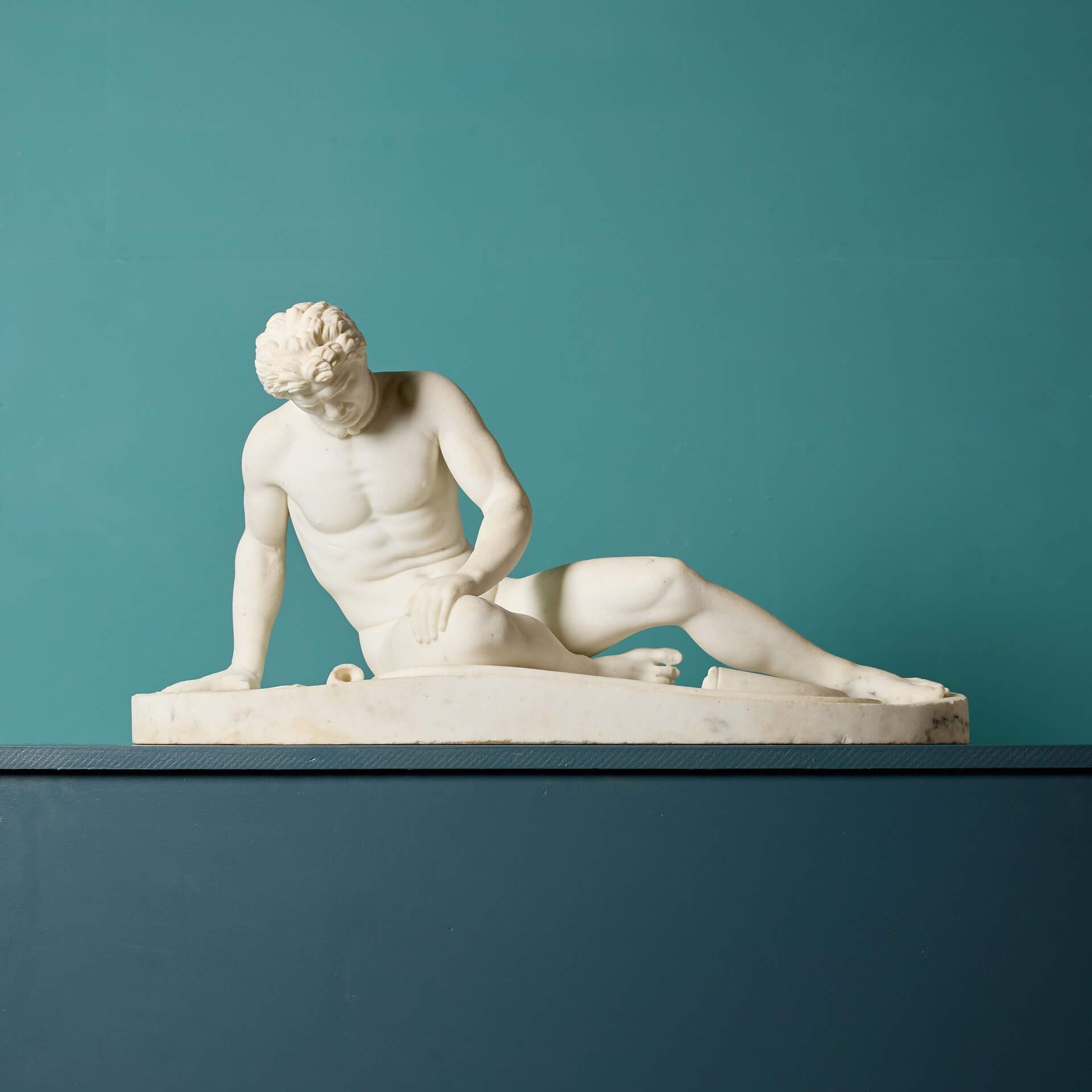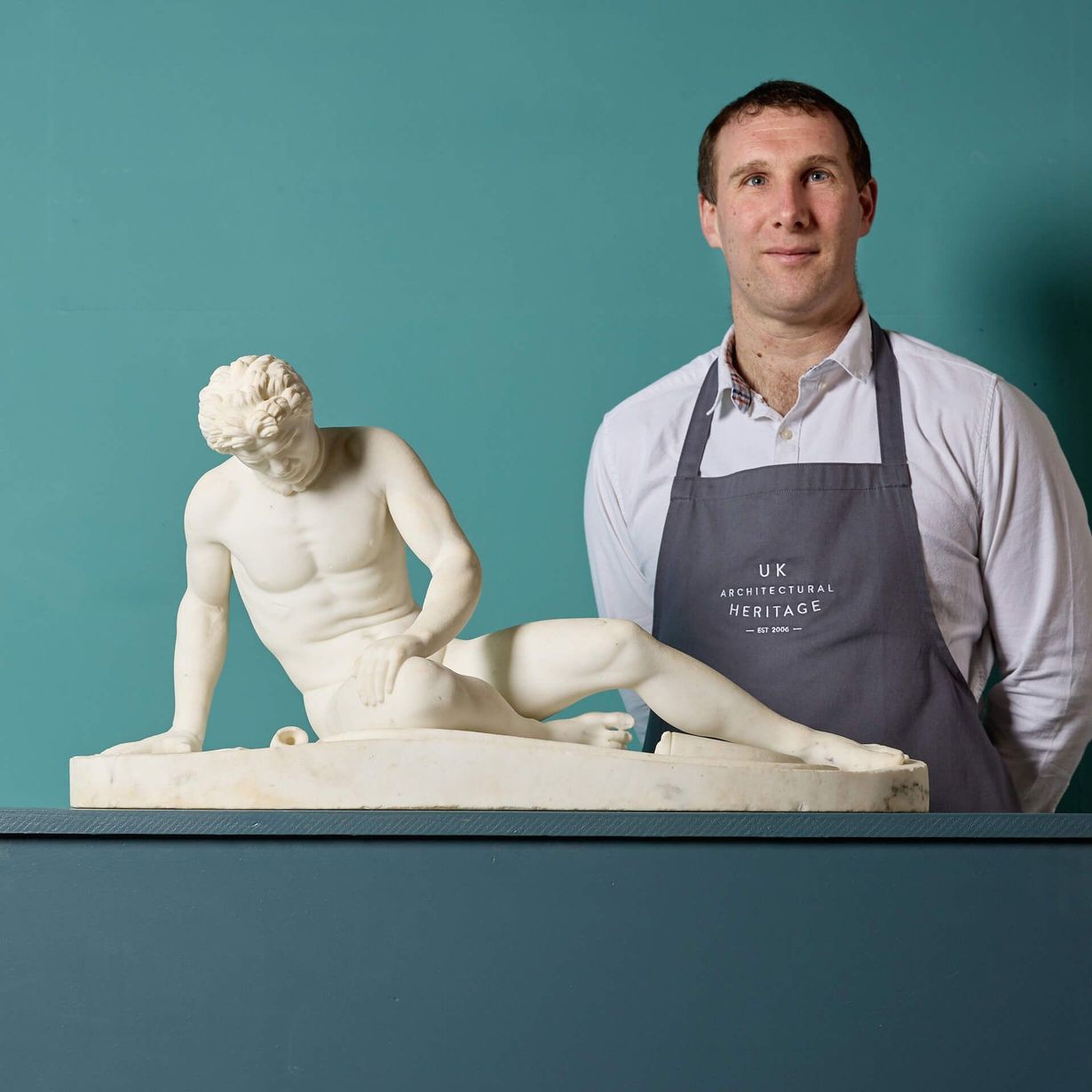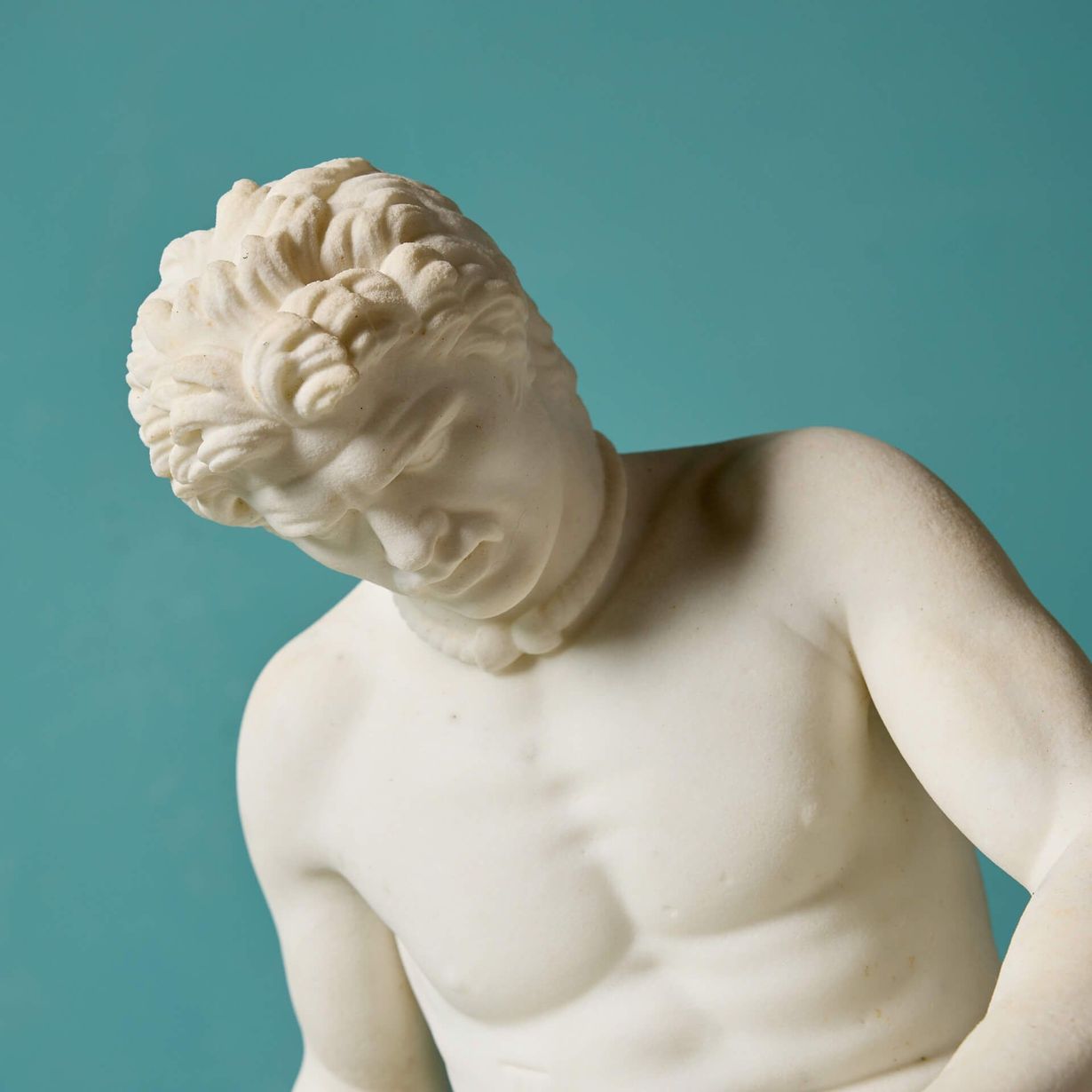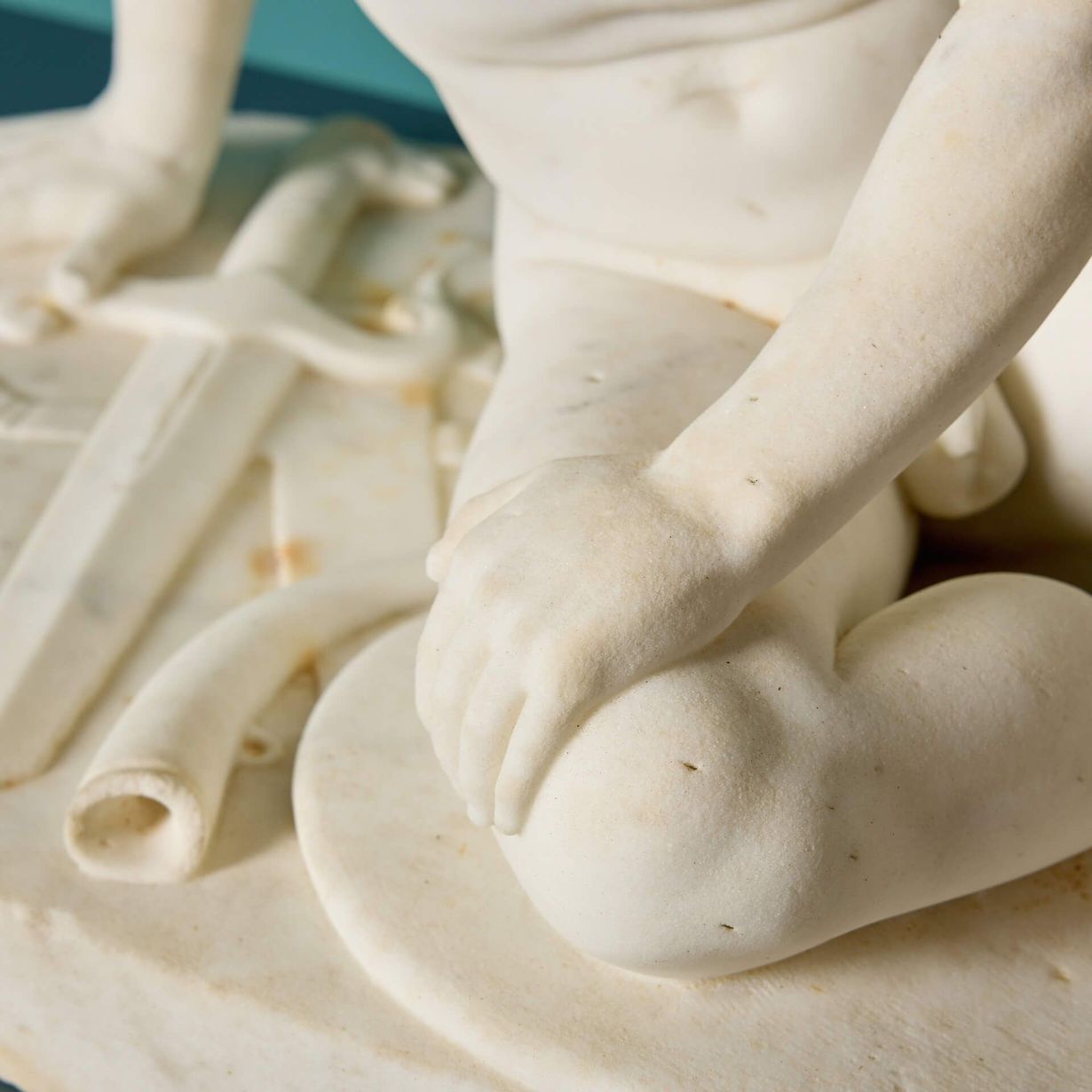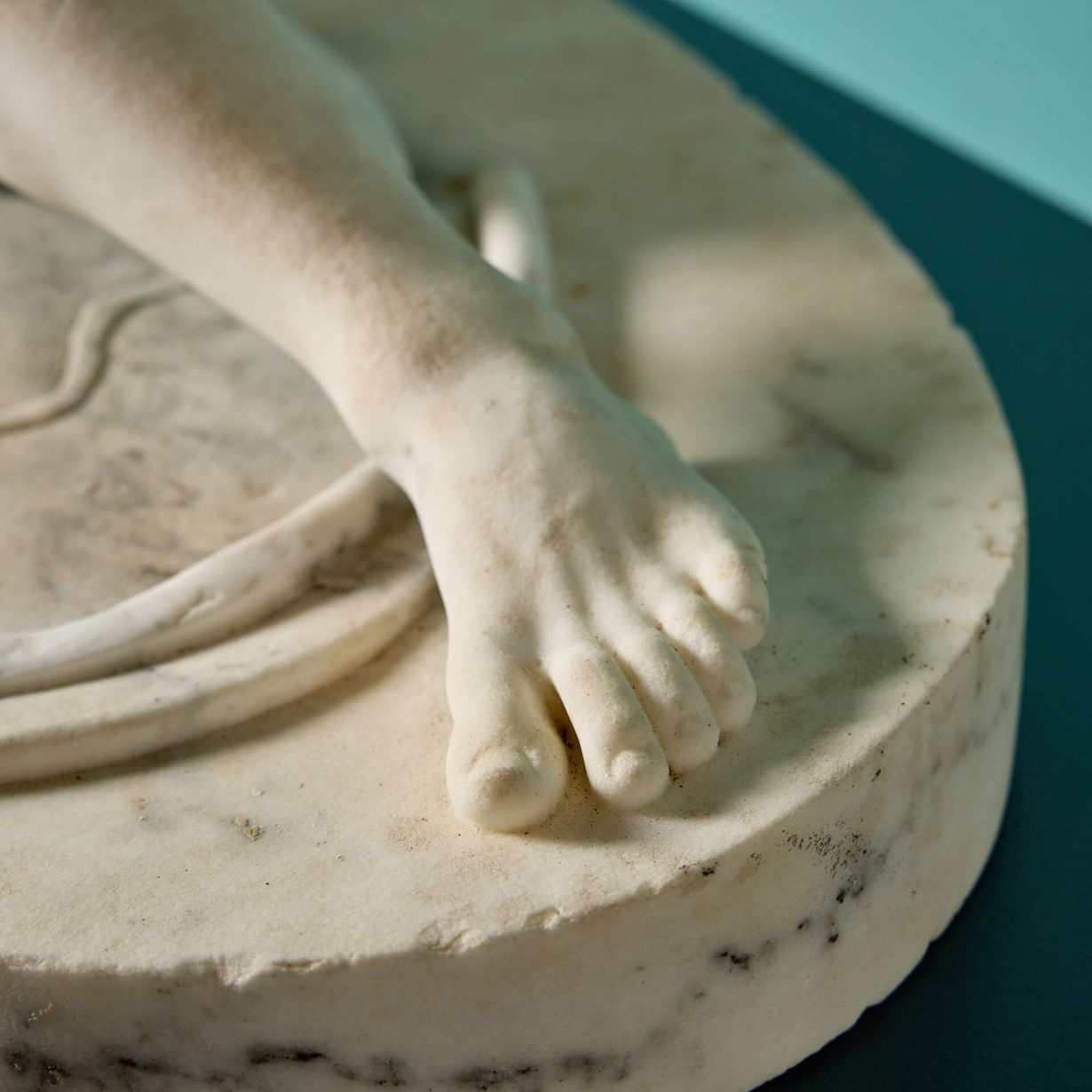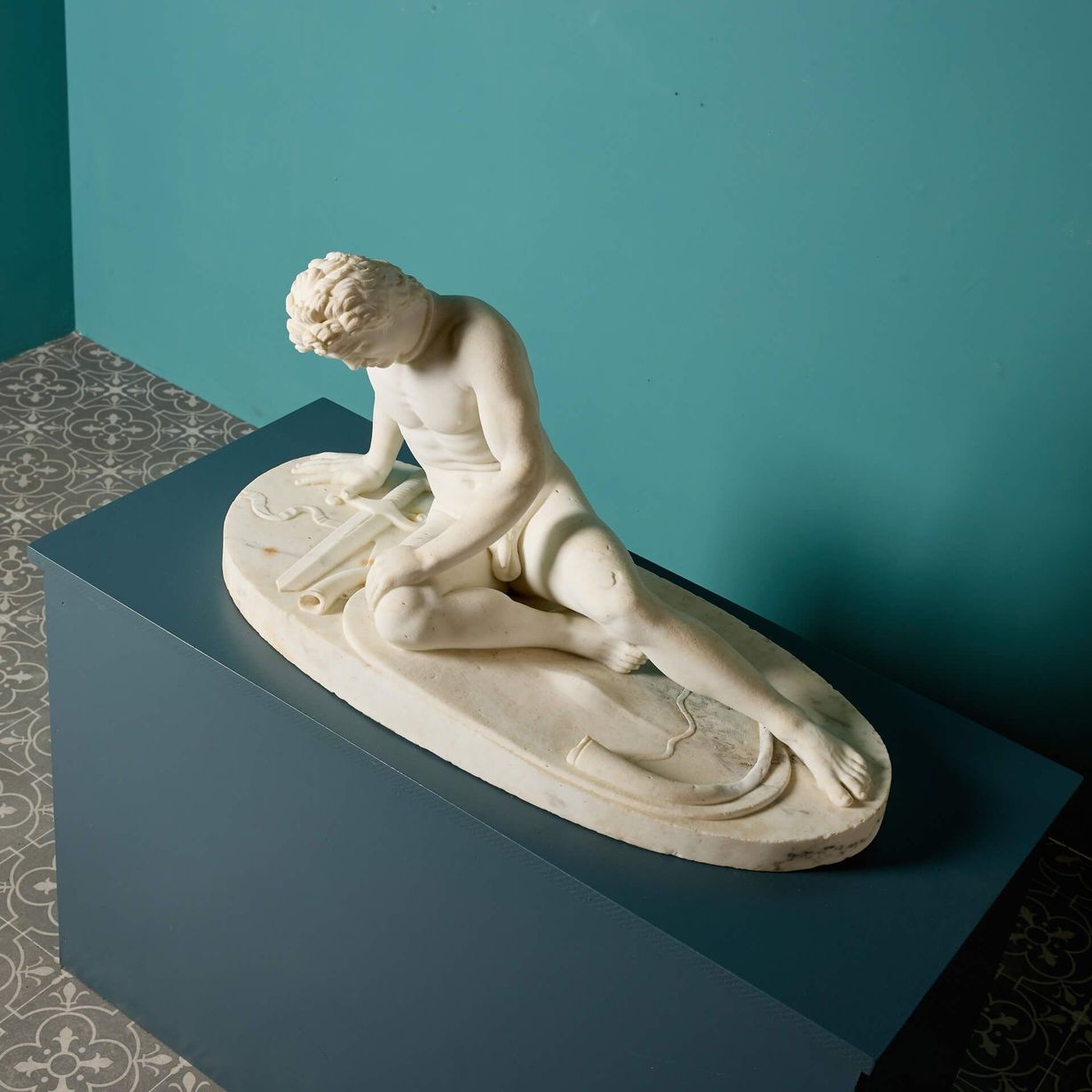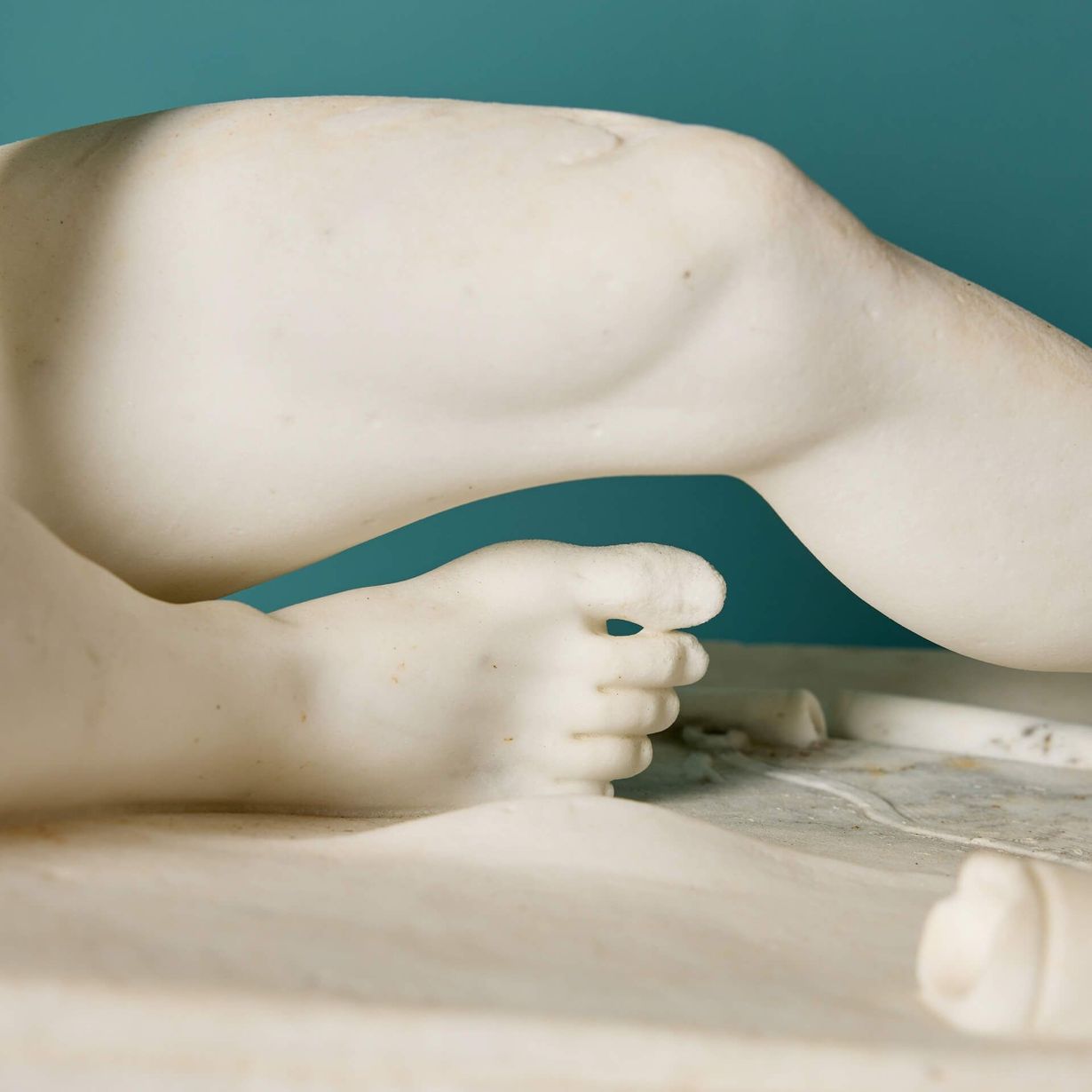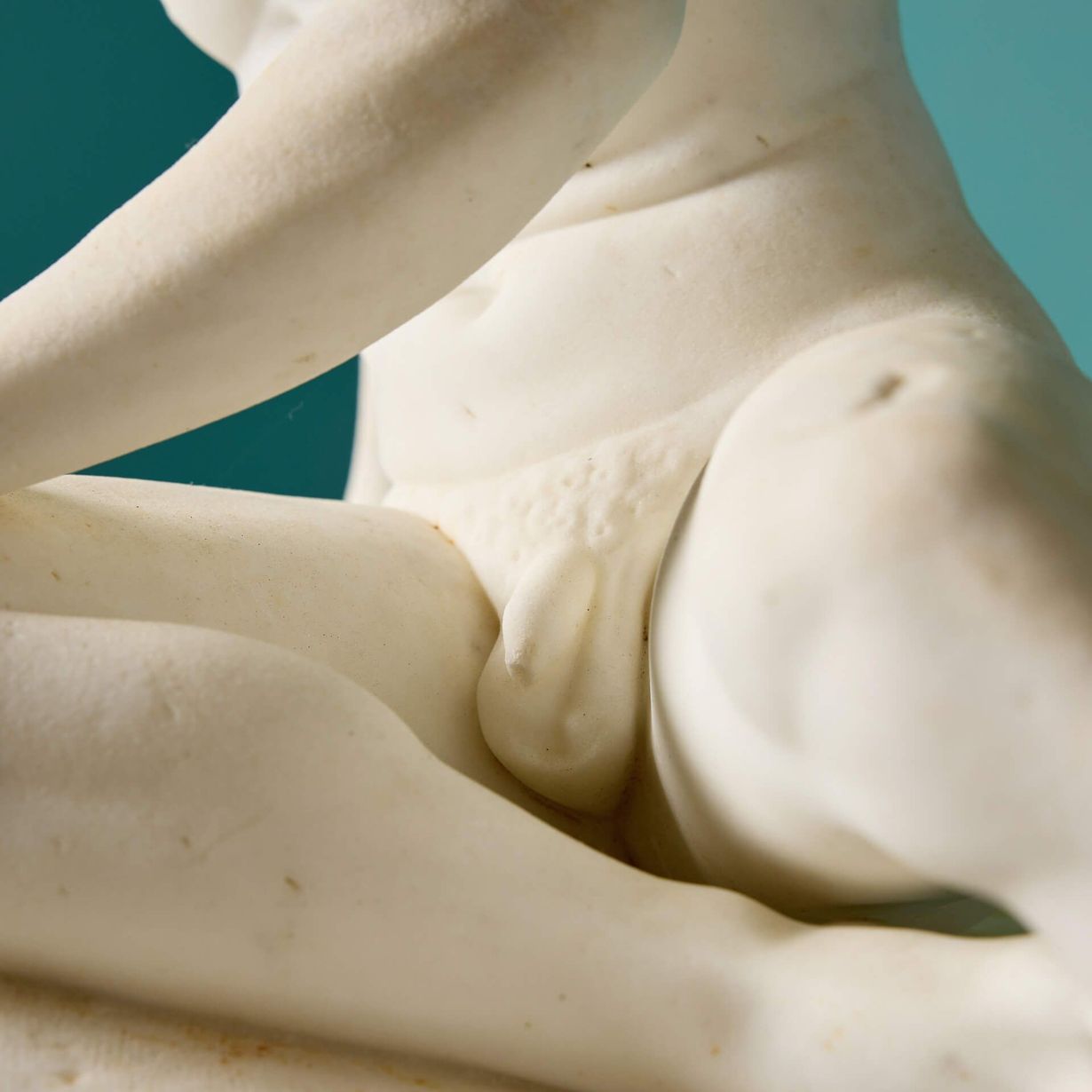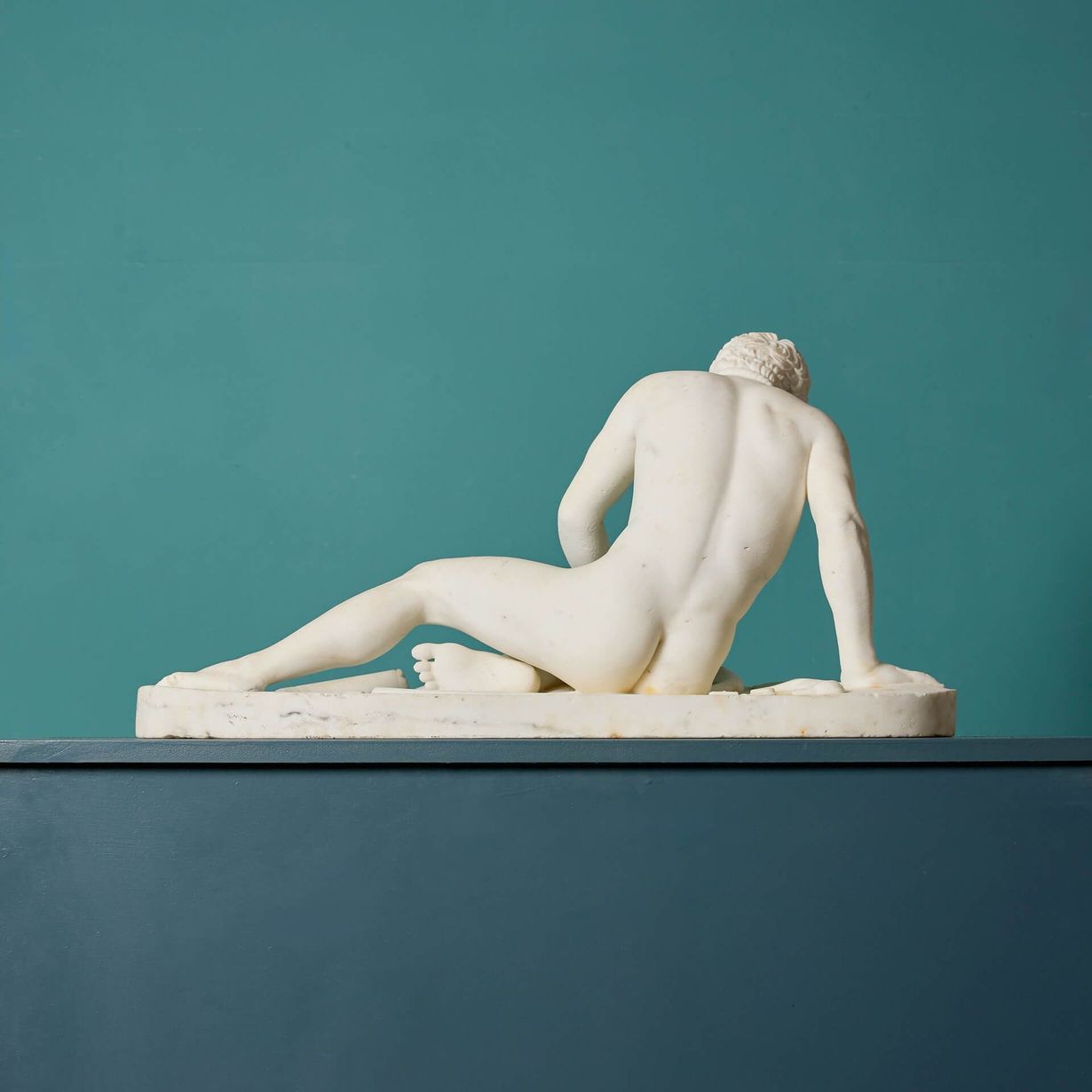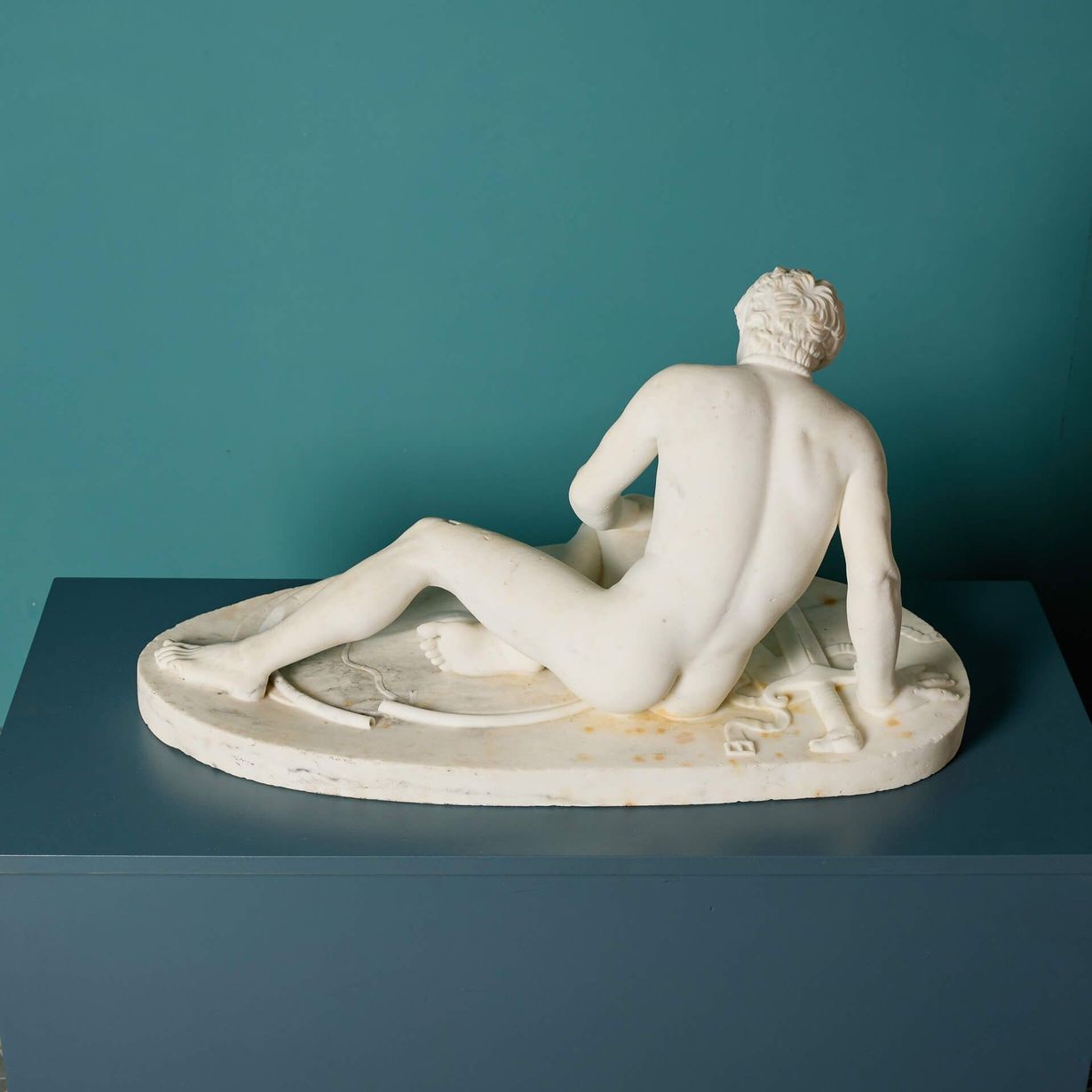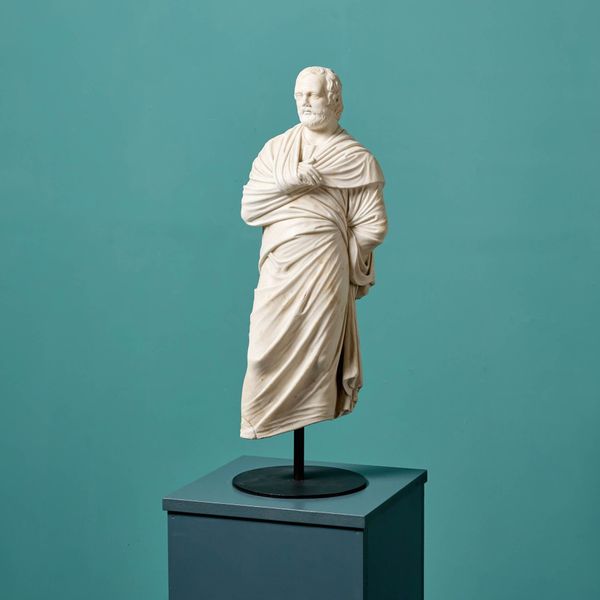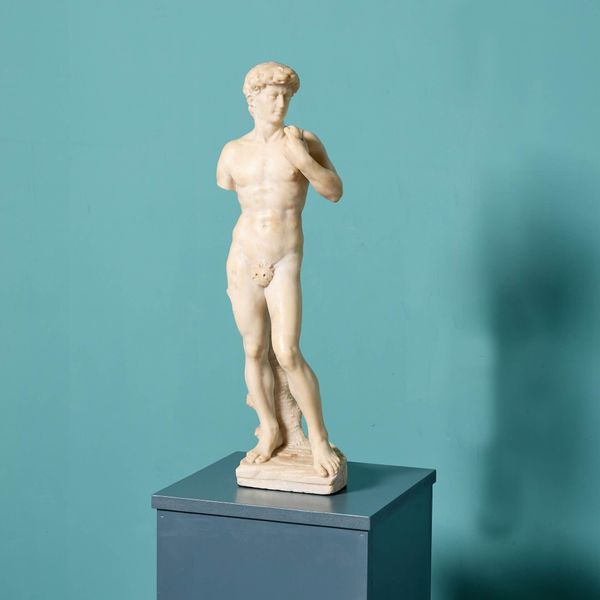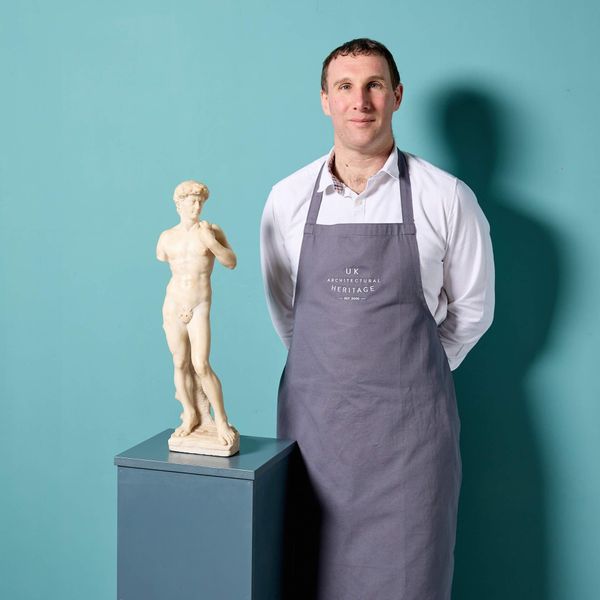About this piece
back to topA mid 19th century statuary marble sculpture of the ‘Dying Gaul’ after the antique.
This marble sculpture is a scale depiction of the larger Dying Gaul marble statue, currently located in the Capitoline Museums in Rome, Italy. It is considered one of ancient Rome’s masterpieces and an essential stop for tourists during 18th and 19th century Grand Tours.
It depicts an injured warrior in his final moments, a sword having delivered a mortal blow to his lower right chest. The nude man, with cropped hair, moustache and torque necklace, leans in a semi-recumbent position, with severed sword beside him and a horn cloven in two.
The sculpture is celebrated particularly for its facial realism, the Gaul’s expression one of anguish, contorted in pain just before he collapses.
The Dying Gaul
The original Dying Gaul, also known as the Dying Gladiator or the Dying Galatian, on which this sculpture is based, dates to 1st or 2nd century AD ancient Rome.
First recorded in 1623, it was discovered alongside another ancient marble known as the ‘Ludovisi Gaul’ in the early 1620s during excavations at Villa Ludovisi. Both are Roman marble copies of now lost Greek bronze originals from the Hellenistic period (323 – 32BC).
The original depiction of the Dying Gaul is thought to commemorate the victory of Attalus I, King of Pergamon, over the invading Galatians. It is an image of a vanquished enemy, showing courage in defeat.
